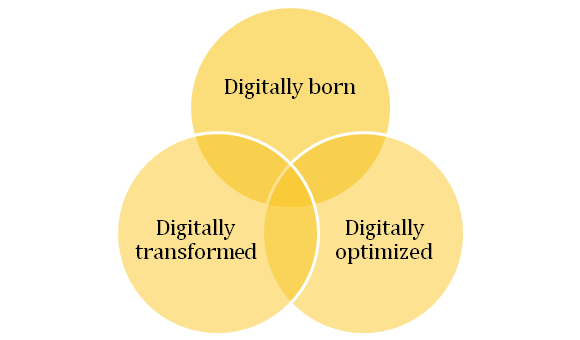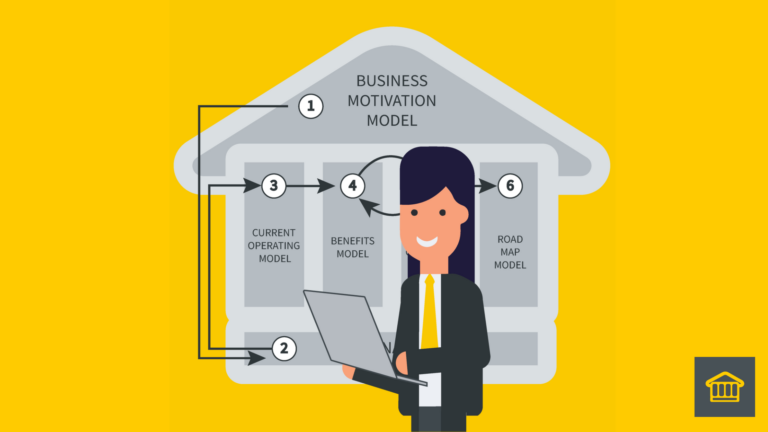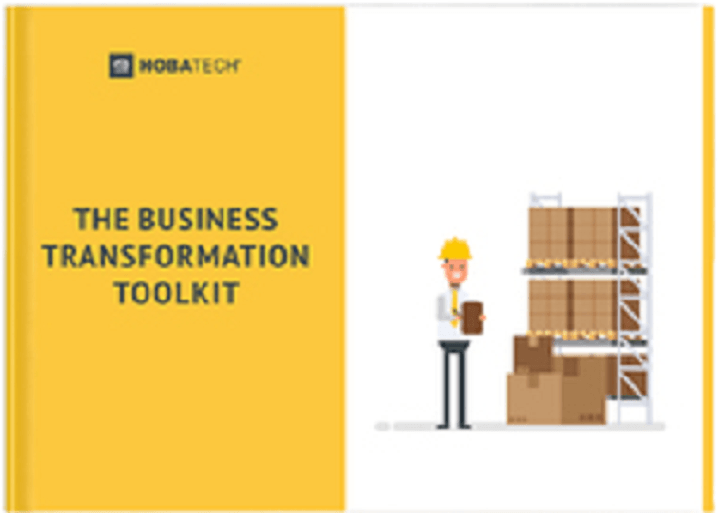What is Digitally Fit?
- Digital Fitness,
- Digital Maturity, and
- Digital Operating Model
1. Digital Fitness
Organisations that are digitally fit are focused on their consumers and have a clear digital strategy in place.Innovation lies at the heart of such businesses and they make use of the latest technologies to stay ahead of their competitors. This is essentially the first step towards gaining digital maturity and implementing an advanced operational model in place. Two popular examples include Porsche and Deloitte that totally transformed their corporate landscape by digitizing their business.
Did you know that Porsche was the very first car manufacturer to integrate the block chain technology into cars, forming a direct offline connection? This was a huge leap for Porsche, as this innovative technology took approximately 1.6 seconds to open and close the car from the app, which is six times faster than ever before!
In addition to that, the popular automobile manufacturer invested in augmented and virtual reality to provide the closest thing to a real experience to their consumers. This particular initiative caused their sales to skyrocket – and why not so? The company gave the consumers an opportunity to explore their world of cars through interactive means (while also reducing their costs as they could easily identify any complex technical problems,too – without wasting any money). This is precisely what we call ‘killing two birds with one stone’. Isn’t this the best use of technology?
Pros:
- Automating business processes enablesorganisational leaders to focus on broader business opportunities
- Effective management and allocation of resources = Less wastage
- Usage of smart technologies and data analytics means greater customer insights and enhanced customer experience – whichin turn helpsdrive growth.
- Digital initiatives enable the organisation to achieve higher return on investments and increased profitability.
- Cloud solutions minimize downtime and ensure maximum protection against data theft.
Cons:
- Digital transformation will require a huge amount of investment to begin with.
- Innovative technologies alone will not help you pull through – you will need a digitally skilled team and operational model in place to truly advance in the digital era.
2. Digital Maturity
Digital maturity is achieved by adopting a proactive approach, which includes boosting collaboration, driving innovation and scaling the way the company evaluates and hires talent. While it is closely linked to the other two components – digital fitness and the digital operating model (that allow businesses to adopt the best technologies and practices needed to succeed in today’s world), the two cannot exist without digital maturity. This is because Digitally Mature organisations know how to react or respond to the abrupt changes using technical and organisational capabilities in collaboration with each other – helping them effectively compete in the market. Some popular examples include Nike, Burberry and Volvo.
Nike did not become a market leader overnight. The company focused its entire efforts into amping up the innovation process and reducing the amount of time it takes for a product to launch into the market. Apart from that, the company also amplified their communication with their customers by going direct. These strategies were adopted after an in-depth analysis on the consumer behavior – thanks to the latest technologies like data analytics and business intelligence!
Pros:
- In the constantly changing environment, businesses that are digitally mature are in a better position to achieve more significant results with a strong vision and dedicated leadership in place – creating a BIGGER impact.
- A recent study by BCG revealed that organisations that were digitally mature achieved up to 30% in cost savings and a 20% boost in revenues. This indicates that digitally mature businesses are able to achieve a significant reduction in costs and a profound increase in revenue.
- Smart marketing tactics boost customer loyalty and engagement, which enables the business to achieve its KPIs faster.
- Establishing a digital culture, cultivating a digitally skilled team and implementing the test and learn approach helps reduce the chances of failures and boosts productivity.
Cons:
- Digitization, innovation and experimentation require a significant amount of investment. This also involves the training/hiring costs of the employees.
- We all know that change does not come easy, so there is a lot of risk-taking involved.
3. Digital Operating Model
The Digital Operating Model has the customer interest at heart – quite literally. It encompasses a ‘Digital First’ mind set, enabling organisations to redefine their relationship with their consumers. Without an appropriate digital operating model in place, the company may experience numerous road blocks along the way that include security concerns, lack of consistent coordination, higher costs and inefficiencies.
Porsche, for instance, focused all its energy and resources on enhancing their customer experience. The company invested heavily in understanding the driver first, before moving onto the technological aspects of the car. All the customer interactions were closely observed and documented, enabling them to turn their marketing campaigns into a huge success. The true secret here lies in understanding the consumer behaviour and implementing appropriate strategies to fulfil their needs. Remember, the consumer does not care how technologically advanced you are. All they care about is how relevant you are to them.
The consumer does not care how technologically advanced you are. All they care about is how relevant you are to them.
Heath Gascoigne Tweet
Pros:
- Greater business agility and speed and large-scale innovation through robust execution tactics.
- Identifying consumer trends and preferences allows businesses to provide enriched customer experiences – boosting customer loyalty and sales.
- A well-structured model ensures reduced costs and excellent usage of digital resources (less wastage).
- Increased collaboration escalates employee empowerment.
Cons:
- Immense expenditure goes into the marketing, planning, coordinating and execution of tasks.
- The trends are ever-changing, which is a constant battle.
- Implementing effective technological solutions takes time and patience.
Now, let’s get right down to business!
Digitally Fit Organisations
Agility, innovation and flexibility are the core characteristics or building blocks that form the basis of a digitally-fit organisation. In order to truly thrive in the current times (and the future ones), it is essential that businesses incorporate all the three elements mentioned above in a systematic order. Having the latest technologies alone will do you no good, until and unless you have an appropriate implementation strategy in place (I wrote about one in another post here).
It is essential to build a digital work culture from scratch by either training your current employees or hiring new up-skilled workers. The leaders of the organisation play a crucial role in this aspect. They are the real driving force behind all the operations; hence they should be specifically trained. Only then will you be able to put an appropriate digital model or framework into action.
BMW started with their digital transformational journey in Mexico and then proceeded onto Germany (their second largest market) all the while experimenting and scaling up. The popular company made use of all the 3 components smartly and tactically to achieve success.
Similarly, Ameri source Bergen did not pursue their digital transformation until they were able to completely transform their entire work culture from head to toe. The company allocated agile teams before jumping onto the other key aspects – which worked beautifully in their favour.
Now that we know how important it is to synchronize the entire process, let’s move onto the 3 basic types of digitally fit organisations out there.
There are three (3) types of digitally fit organisations:
• Digitally Born – brand new businesses that get the benefit of starting with the latest technology (but have the issue of market, customer and product development).
• Digital Optimised–this is for companies that have a digital footprint now, and want or need to develop it.
• Digitally Transformed – and the latter is existing businesses that need to transform using digital technologies.

1. Digitally Born
As the name suggests, ‘Digitally Born’ organisations are new businesses just stepping into the corporate world armored with all the latest technologies and equipment. Everything they do is carried out through the ‘digital lens’ and the execution of tasks is done using a modern and agile approach. While they do have an advantage here, they still have to invest heavily in researching their target market, identifying the consumer trends and developing the product they intend to sell (or improvising).
The technology and tools will remain useless until they are put to good use. Uber, for instance, is a digitally born company with all the latest technology at its disposal. Uber realised that it’s the 21st century and finding a taxi should not be a chore anymore; hence they come up with an innovative business model that has changed the way consumers commute on a day to day basis.
2. Digitally Optimised
Digitally Optimised organisations already have a road map to their digital transformational journey – they just need to follow it through.
Digitally Optimised organisations already have a road map to their digital transformational journey – they just need to follow it through.
Heath Gascoigne Tweet
They do, however, need to connect the dots and work with the remaining pillars in order to boost their operations. Amendments will be made to their current business model. These steps will, in the long run, significantly reduce costs and boost productivity.
3. Digitally Transformed
When businesses are not born digital, they have to steer their ship towards the “digital” direction in order to sustain their existence. This involves completely revamping their business strategy, work culture and operational model.
The company will invest in the latest technologies (like Big Data, cloud technologies, cyber security, and Artificial Intelligence), hire digitally-minded personnel, and focus on innovation now more than ever. This may seem impossible to achieve at first, but when you look at companies like Capital One, Wal-Mart and Target – it all just makes sense.
Capital One was the first bank to integrate Amazon’s Alexa into its financial transaction voice-activated system. Plus, its mobile app was the first to support the TouchID software by Apple. This transformation resulted in excellent gains for the business in terms of customer loyalty.
The owner of Subway plans on completely changing the layout of the stores by introducing self-service kiosks – speeding up the entire food-ordering process. In addition to that, they’re calling 150 technological experts on board to boost the business’s app. Now that is what we call innovation!
So there you go, that is how the digital landscape is completely revolutionizing the corporate industry. These digital initiatives and advancements have paved the way to success for most businesses before you – and if these companies can do it, so can you! Remember, the trends are constantly changing and if you don’t evolve with the changing trends, you risk losing your relevance.
Thank you for reading this, hope you found a lot of value in it!
Sincerely,
Heath Gascoigne
P.S. If you want to join our Business Transformator community of like-minded Business Transformators, join the community on the Business Transformator Facebook Group here.
P.P.S. If you want to learn more about business transformation, check out The Business Transformation Playbook here.
For more information, visit https://www.hoba.tech












